
3 Rare Antique (1920s) Richardson Crystal Liquor Glasses (4.5/12cm, 108g Each)
August 28, 2022
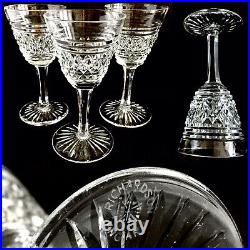

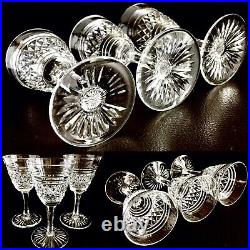
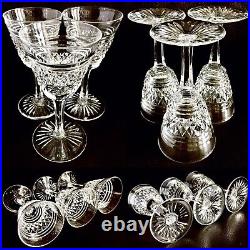
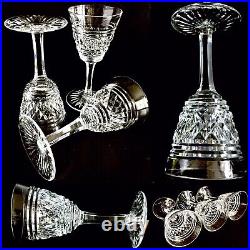
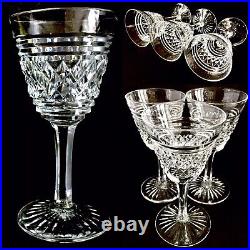

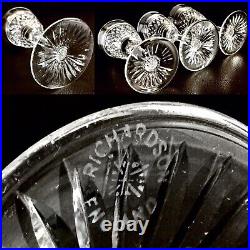
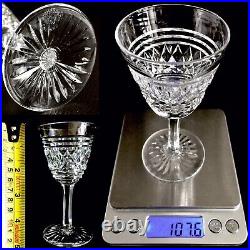

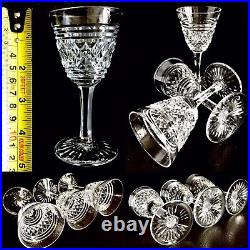
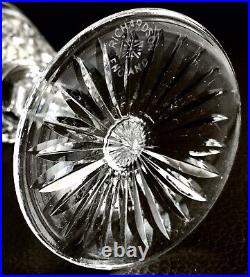

Highly collectible Set of Three Rare Antique (1920s) English George V Richardson Crystal Liquor Glasses (4.5/12cm, 108g Each). Superb collectible pieces of British lead crystal glass history from one of the pioneers of the crystal glass manufacturers in the UK and worldwide. Please browse all 12 sets of photographs attached for size, weight and condition as they are self explanatory. Superb weight and feel. Despite being close to 100 years old, they would not look out of place in any modern environment. These crystal glasses have stood the test of time. George V was King of the United Kingdom and the British Dominions, and Emperor of India, from 6 May 1910 until his death in 1936. Benjamin Richardson, born 1802, Stourbridge, Worcestershire, Eng. Died 1887, founder of one of the great English glass-manufacturing houses, who was instrumental in the introduction of modern glass-working methods to England. Richardson’s Stourbridge factory was the first in the country to have a threading machine for making filigree glass and the first to make mass-produced pressed glass tumblers. The factory pioneered in the use of pressing machines for decorating flint glass with relief ornaments. His firm also became one of the leaders in producing cameo glass for commercial sale. The blue-and-white Roman vase was considered one of the most beautiful pieces of glassware ever made and the finest surviving example of Roman cameo glass. The first successful replica of the vase was completed in 1876 by a former employee of Richardson’s, a local glassmaker named John Northwood q. , but it was not made for Richardson. Richardson is also remembered for his efforts to reduce the cost of manufacturing quality glassware, thus rendering it accessible to the general public. The Richardson family have a complex history. Richardson began at Hawkes & Co. But left & joined up with W. Richardson taking over Wordsley Flint Glassworks (fnd 1720). Richardson joined with Thomas Webb I (1804-69) to become Webb & Richardson. The Wordsley works became W. The works closed in 1852 despite success in the Great Exhibition, due to financial difficulties but reopened within a couple of years by Benjamin Richardson. He formed other partnerships; Hodgetts, Richardson & Pargetter (1836-69) Hodgetts, Richardson & Sons (1871-82) In 1887 his concerns were taken over by Benjamin Richardsons grandsons becoming H. It was acquired by Thomas Webb & Sons in 1930 & the firm was operated from the Denis glassworks which finally closed in the late 1960’s. The Richardson label was used until the 1970’s. Benjamin Richardsons energy & experimentation combined to the partnerships he formed led to the rebirth of English glass. This has earned him the title of’Father of the Glass trade’. The Richardsons had extensive influence, W. Richardson II manged the James Couper Glassworks. John Northwood, Philip Pargeter, John Thomas Bott, Alphonse-Eugene Lechevrel, Joseph Locke. After 1825 – introduced a new style of long flutes of flat cut glass (pillar cutting). 1840’s – Bohemian style triangular shaped decanters, clear apple green colour. Some with elements of the gothic style trefoils after Pugin. Transfer printed opaline glass often with classical themes. Enamel & gilt oriental scenes. Enamel & gilt rococo revival scrolls & flowers. Red, white & blue twist stems on wine glasses. Stems on wine glasses with externally applied glass threads wound-up the stem. Red Tazzas with gilding & dolphin stems. Green glasses in germanic style with applied gilding & conical foot. Pressed glass in imitation of cut glass. 1845 – coloured, opaline, layered, enamelled & painted glass of pictoral subjects. Blue, white, cased glass in Bohemian style. Venetian style glass from white & pink canes. 1851 – Compressed air blown diamond glass. 1850’s – Double twist of glass tubes forming handles on pitchers. Richardsons vitrified enamel colours used to produce small bowls. 1854 – Vermicular patterns, acid etched surface with twisting lines of polished glass. 1857 – etched molded glass with machine threading. Pearl satin glass-> glass was blown into a mould which produced hollows into the surface. This was coated with an outer layer of glass trapping air. 1861 – Northwood develops a device for transfering designs on copper plates to glass. 1877 – John Northwood produced the first cameo glass copy of the Portland vase. Alphonse-Eugene Lechevrel produced a range of cameo vases of excellent quality. Left in 1900 & taught the Schneiders. Joseph Locke (Lechevrels pupil) produced outstanding glass. He worked in cameo producing another Portland vase + Cupid saling a cockleshell. 1878 – Mimiced Webbs Bronze glass originally developed by Webb while in partnership with Richardson. Iridesnce in green & brown. 1880’s – Fancy glass, cranberry (ruby) sometimes with gilt, opalescent glass. Flower stands with opalescent flower holders. Cameo production in full swing. Yellow glass with regular droplets of cream/white. 1887 – Hodgetts developed a device to apply glass threads to glass. Richardson produced iridescent glass. 1890’s – filigree effect of lattaccino white threads on translucent glass. Brilliant cut glass; Russian style, giving rise to closely spaced deep cutting & a prickly finish Iris threaded glass; green glass with pink trailings a la Tiffany & Quezal. 1900’s – reproduction George III glass. 1904-5 – Ceonix vases – yellow or pink marbled finish vases. 1905 – Firestone range, satin finish glass with applied festoons. 1920’s – Cameo fleur, cameo flowers against stippled or cut background (Marked Webb). This item is in the category “Pottery, Ceramics & Glass\Drinkware & Barware\Drinkware”. The seller is “santoor-uk” and is located in this country: GB. This item can be shipped worldwide.
- Origin: UK
- Number of Items in Set: Three-Piece
- Shape: Round
- Signed By: Acid Etched By Richardon Glass
- Occasion: All Occasions
- Type of Glass: Crystal
- Custom Bundle: No
- Year Manufactured: 1920s
- MPN: Richardson Crystal
- Glassmaking Technique: Hand Blown
- Maker: Richardson Glass
- Colour: Clear
- Original/Licensed Reproduction: Original
- Capacity: As In Photos Attached
- Item Height: 4.5”/12cm
- Style: George V
- Features: 3 Pieces
- Production Style: Cut Glass
- Finish: Glossy
- Handmade: Yes
- Pattern: Unknown
- Signed: Yes
- Item Diameter: As In Photos Attached
- Material: Crystal
- Brand: Richardson Glass
- Type: Liquor Glasses / Goblets
- Original/Reproduction: Antique Original
- Theme: British
- Time Period Manufactured: 1920-1929
- Production Technique: Hand Blown Glass
- Country/Region of Manufacture: United Kingdom
- Backstamp: Etched
- Country of Origin: Britain
- Glassware Type: Crystal/ Cut Glass
- Item Weight: 108g Each
- Product Line: Richarson Glass Crystal
